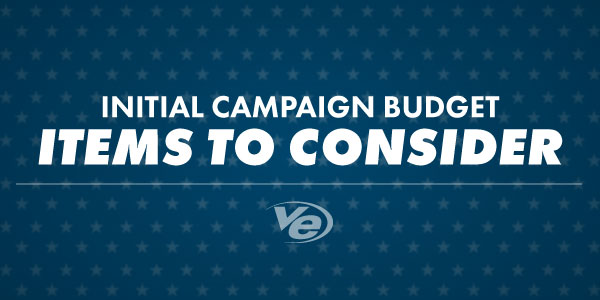
As you begin to lay the groundwork for your new campaign, there are a few essential budget items that you’ll need to get things off the ground. We take you through the most immediate items every candidate needs to consider.
Office Expenses
One of the first things every candidate wants to buy is office space. A headquarters or base of operations provides place to organize supporters, store campaign collateral, make phone calls, and complete office work. Although sometimes needed, you have room to make smart choices regarding this expenditure. Consider any free options available to you first, such a supporter willing to donate their home or an existing office space. If nothing is available there, look for a location with low rent and affordable utilities. Have the same outlook when it comes to office supplies. A brand name pen doesn’t have any more voter influence than the generic kind, so seek options that are cheap or donated.
Other Fixed Costs
When it comes to campaigning, there are many different fixed costs that the campaign will have to account for. For example, most campaigns will need to invest in a door-knocking mobile app for volunteers to use or a phone system to make campaign calls with. Comparison shopping for these goods and services is the best way to save money. If you need a campaign vehicle, make sure it is reasonably priced, fuel efficient, and has a low insurance cost.
Campaign Collateral
A trap that many candidates fall into is the desire to have a variety of “promotional materials” to give to staff and supporters. For the most part, these are an absolute waste of money. Every campaign needs literature, bumper stickers, lapel stickers, and a limited number of t-shirts for dedicated volunteers. Anything more than that rarely adds value to the campaign and wastes donor dollars. How much impact on someone’s vote do you really think a promotional emery board, one use hand fan, or plastic cup really has? Don’t fall into the collateral trap. Make smart choices, only spend money on what’s needed.
Once you’ve got these items accounted for, your campaign is ready to take on administrative costs like staff, compliance fees and bank fees. With those covered, you’ll be on to the more well known campaign expenditures like data acquisition, digital advertising, direct mail and ad production.
Always start small and operate within a budget before moving on to the big stuff. Otherwise spending can get out of hand quickly.
